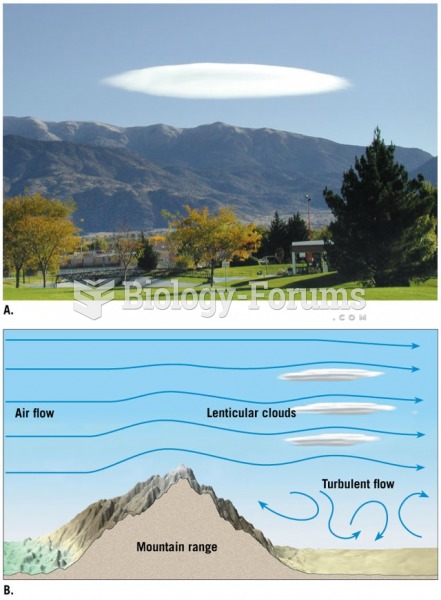Answer to Question 1
ANSWER: Most clouds form in rising air, but the mammatus forms in sinking air. Mammatus clouds derive their name from their appearancebaglike sacs that hang beneath the cloud and resemble a cow's udder. Although mammatus most frequently form on the underside of cumulonimbus, they may develop beneath cirrocumulus, altostratus, altocumulus, and stratocumulus. For mammatus to form, the sinking air must be cooler than the air around it and have a high liquid water or ice content. As saturated air sinks, it warms, but the warming is retarded because of the heat taken from the air to evaporate the liquid or melt ice particles. If the sinking air remains saturated and cooler than the air around it, the sinking air can extend below the cloud base, appearing as rounded masses we call mammatus clouds.
Answer to Question 2
ANSWER: Visible and infrared images are used to deduce information on cloud thickness and height. Visible images show the sunlight reflected from a cloud's upper surface. Because thick clouds have a higher albedo (reflectivity) than thin clouds, they appear brighter on a visible satellite image. However, middle and low clouds have just about the same albedo, so it is difficult to distinguish among them simply by viewing them in visible light. To make this distinction, infrared cloud images are used. Such pictures produce a better image of the actual radiating surface because they do not show the strong visible reflected light. Since warm objects radiate more energy than cold objects, high temperature regions can be artificially made to appear darker on an infrared image. Because the tops of low clouds are warmer than those of high clouds, cloud observations made in the infrared can distinguish between warm low clouds (dark) and cold high clouds (light). Moreover, cloud temperatures can be converted by a computer into a three-dimensional image of the cloud.






